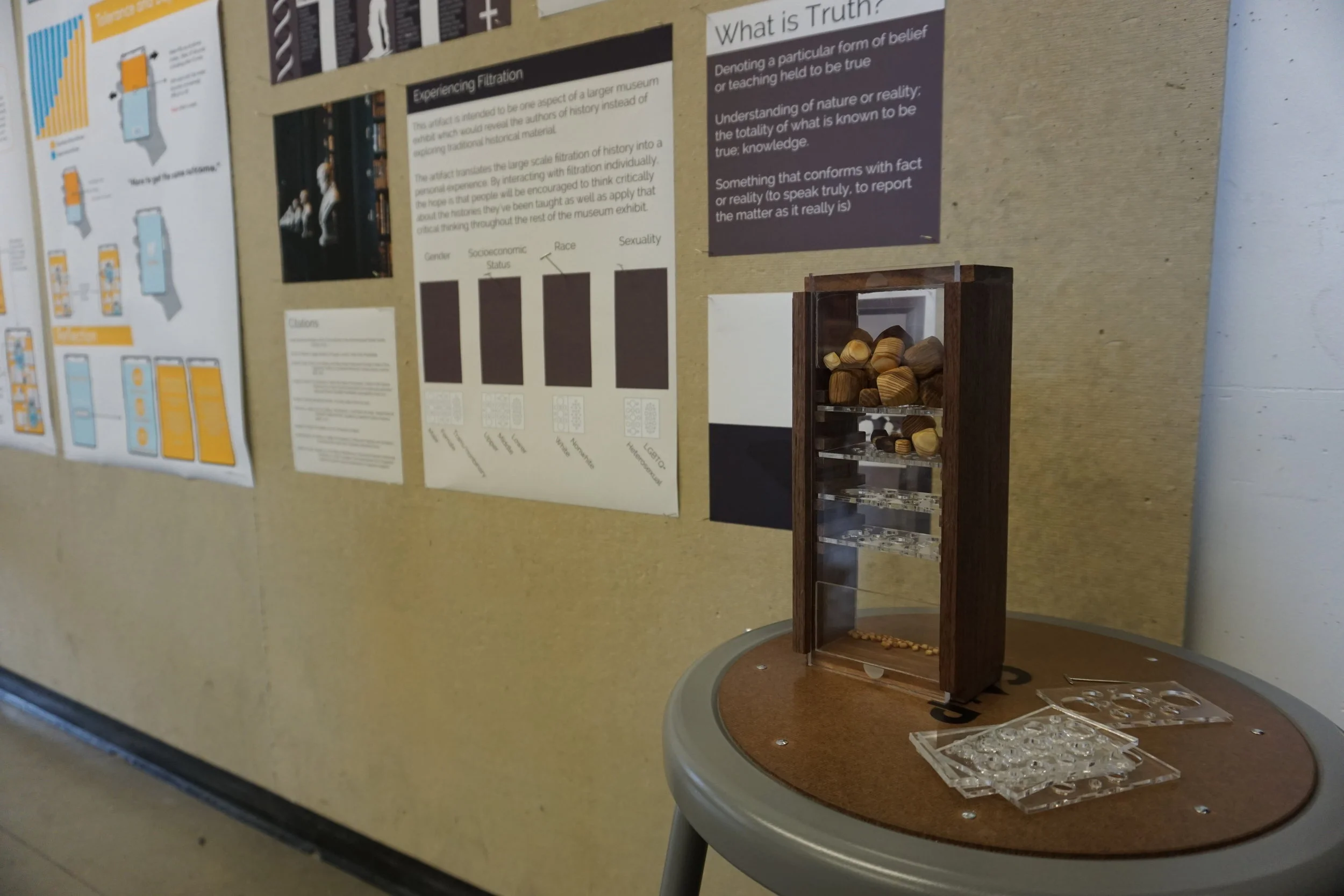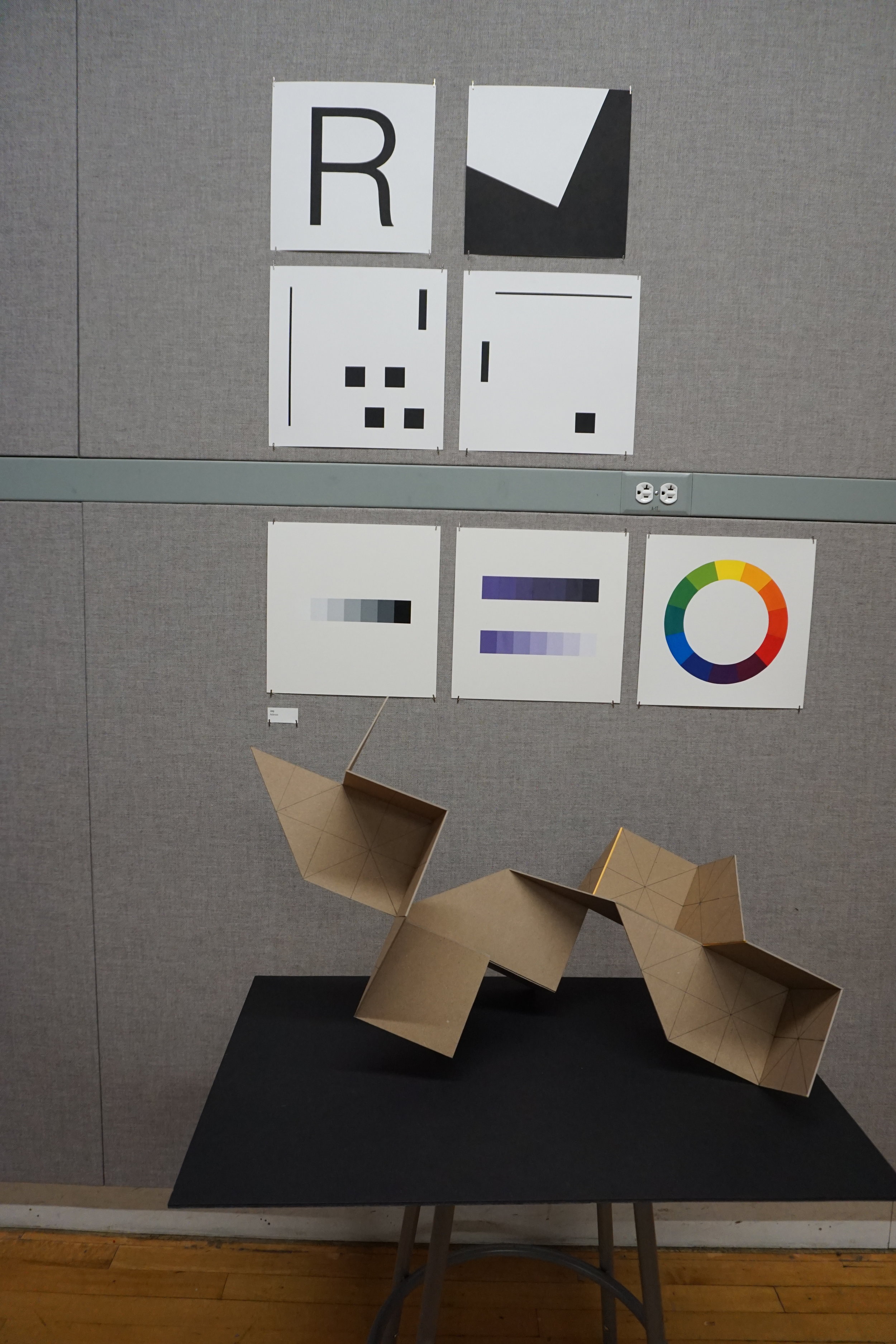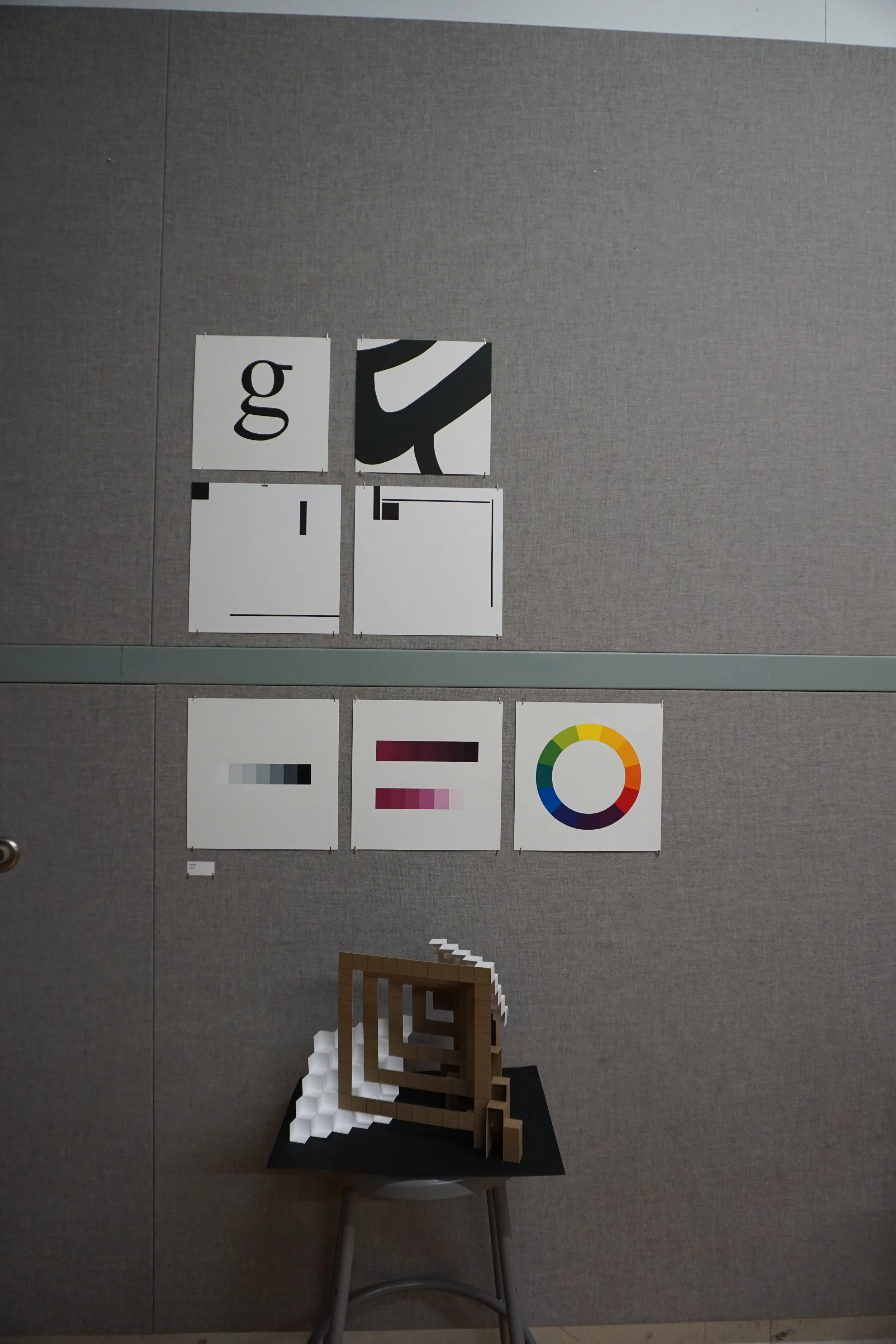Curriculum, workbooks, and student work from courses taught at University of Utah...
Introduction to Design Thinking
The course
DES 2615
Taught Fall 2017, 2018,
Spring 2018, 2019
University of Utah, College of Architecture
Teaching Assistant to Keith Diaz-Moore (F17),
Andi Wizcak (S18), and Jim Agutter (F18, S19)
100-140 students from across the University
Curriculum
Goal: Introduce students who are unfamiliar with design to the phases of design thinking, design research methodologies, and rapid prototyping. Create a classroom environment where failure is encouraged often and students feel they have space to explore the constraints of any given problem.
For the Fall 2018 and Spring 2019 semesters, the focus is “Designing Your Life” with an ‘External’ portion where students will focus on human centered issues out in the world while an ‘Internal’ portion encourages them to identify their own voice and understand their own values and opinions. Students are using the Curriculum Workbook pictured above to maneuver through the external/internal split while becoming familiar with the design thinking process.
This course is a Community Engaged Learning course – connecting students with community partners to expand reach beyond the bounds of campus.
Curriculum Workbook
The Introduction to Design Thinking Workbook is exactly that – a workbook designed to help students better understand the design thinking process in terms of both the world and themselves within the world. Filled with a series of frameworks, prompts, and relevant course information, when used with the coorelating Canvas site and modules built for this course, it becomes clear that the book is designed to be used as a part of the bigger system for learning how to become a more efficient creative problem solver.
Designed and Written by: Jim Agutter, Erica Fasoli, Tony Tsai, and Stella Liechty
Fall 2018
Excerpts from the workbook are pictured above
[Experience as] Product Design Studio
The Course
DES 3510
Taught Fall 2018
University of Utah, College of Architecture
Co-Instructed with Bogart McAvoy
12 Sophomore Multi-Disciplinary Design Students
Above: three examples of the final exercise and presentation of the semester with the final write up submitted by each student.
Summary
My hope for this course is that although some of the students really struggled, having taken this course early in their college careers will leave a positive and empathetic mark on how they approach problems and projects going forward.
Curriculum
When building the curriculum for this course, we wanted to frame the idea of product in terms of experience surrounding the concept of ‘Translation’ with the goal of improving communication and empathy almost as byproducts of the exercises chosen.
To do this, we planned three exercises over the course of the semester,
1) Experiencing Translation: with limited information from a partner, the students were instructed to make one another a physical gift. Over the course of a week, the students were able to share more information and iterate on the gift they made. The outcome were mostly thoughtful, well-crafted gifts that fit within their partner’s lives.
2) Translate Senses: with another student, the class was assigned to research one of six human senses – touch, taste, smell, sight, hear, or proprioception – then in teams of four (ex: groups smell and proprioception may be paired into a team), they then analyzed each group’s set of research identifying similarities, differences and points of interest, and translated that into an experience. The outcome of this project was more murky than expected. It’s my belief that while we gave reading and attempted to provide context, the levels of ambiguity and trust in the process that I was expecting were a little high for where the students were at.
3) Translate Experience: students were asked to research five topics that most interested them and bring that research in to class. From the five topics, the students were again asked to analyze their research and identify the points of interest that most stood out to them and then question why that stood out. We then asked them to frame this in the context of self and other. Which groups/people/species/segment/etc. are ostracized? Which segments of this topic are the target audience? Once they answered these questions, the students were assigned to translate that self/other experience to an audience. Again, the outcome for this project was not what we expected to see. For this exercise though, we found that most of the students struggled most with the idea of creating an experience and presenting it as a product.
Design Foundations Workshop
Curriculum
Design Foundations Workshop is a part of the Design Foundations course series that all pre-major students in the College of Architecture are required to take before applying for any program within the college. To ensure that students in all sections of the course receive a comparable education on the foundations of design while in the course, the curriculum is prix-fixed by the program coordinator. Within the constraints of the unified assignments, each instructor is able and encouraged to interpret the assignments in the way that they believe will best benefit their students.
Over the course of the semester, students are given two exercises (2” cube and an 8-part image curation) and four projects to focus on particular studies (figure/ground, composition, color, and grids/planes). While there are check-ins throughout the semester, students present their full collection of work at the end of the semester for a grade. Grading is based solely on participation, effort (improvement) and attendance. Being able to watch students begin to comprehend concepts that they didn't know were a possibility before is an incredible benefit of the opportunity to teach this course. Those who put in the time, often surpass even their own expectations.
The Course
ARCH 2630
Taught Fall 2018,
Spring 2019
University of Utah, College of Architecture
Instructor
16-20 Pre-Major Design, Architecture
or Urban Ecology Students








































